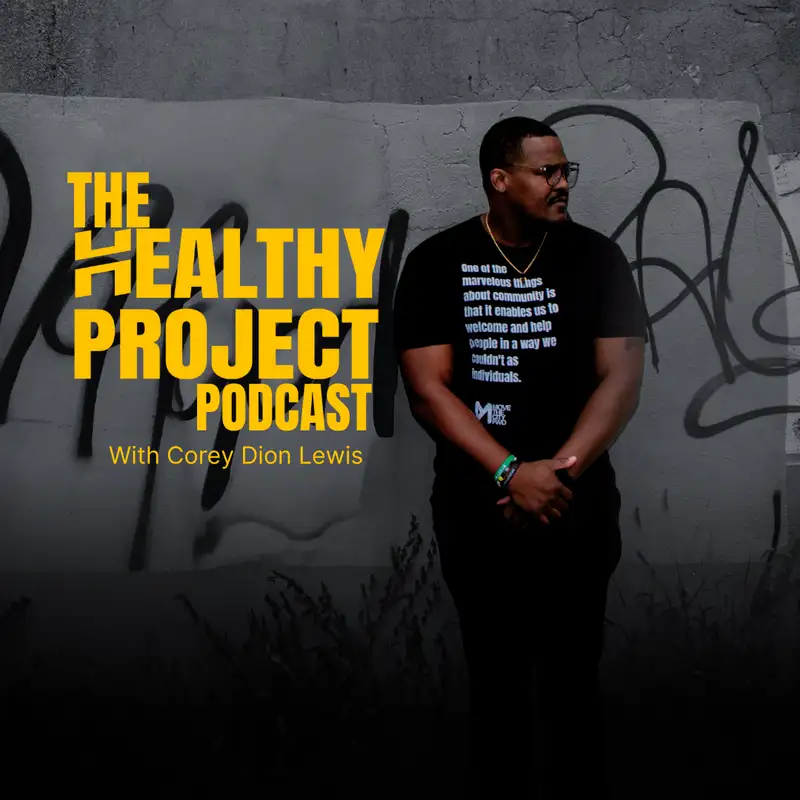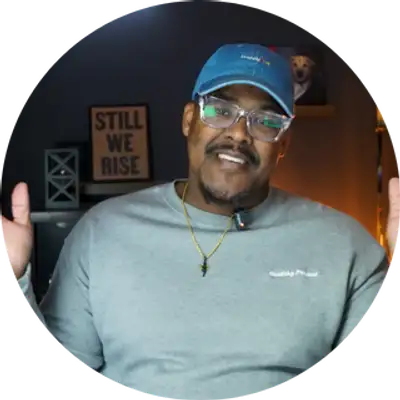Understanding Food Swamps: How Your Environment Shapes Health and Access to Nutrition
Corey Dion Lewis (00:05.272)
Welcome back to the Healthy Project podcast, where we have real conversations about public health, equity, and everything in between. I'm your host, Corey Deion Lewis, and today we're going to be talking about something that might not be on everybody's radar, but is having a massive impact on communities across the country. Food swamps. Yeah, so food swamps.
I've never heard of this is something that I just learned about and probably a month ago. I've had numerous conversations on this podcast about food deserts, I learned about food, apartheid's, a food swamp was something that was pretty new to me and I wanted to share it. You guys may already know what a food swamp is. If you do, I'm still listening because I need the views, but if you don't,
I think you may find it pretty interesting. what in the world is a food swamp? That is a great question. So a food swamp is basically an environment where unhealthy food options are everywhere. Think about an area where fast food joints, convenience stores and gas stations with snacks loaded with
Sugar and salt far outnumber places where you can get fresh nutritious food. It's not that there isn't food available. There's plenty of food. The problem is what kind of food is most accessible. Now you might have, like I said, you might have heard of a food desert before. And while food deserts are about not having access to food, food swamps are just a little different.
like the food is present, it's just not the best, healthiest food choices. This comes into play a lot with the work I do with the individuals I serve as a clinical health coach for a safety net hospital. I will see someone in my office where they have high blood pressure, A1C of 10 or 11, sometimes 14, no exaggeration.
Corey Dion Lewis (02:31.146)
And I'm trying to discuss healthier food options, trying to make healthier choices. And the most convenient choice or the best choice or option for them is going to the gas station. That's closest to them because they don't have transportation or they have food assistance, but it only serves them for half of the month. Now they're supplementing with
the best options they can have. So am I going to tell somebody that, you know, who has to supplement with the food pantry or has to be very, very frugal with their money? Well, I can go to the gas station or the convenience store and get 12 packs of ramen for a dollar, or I can get a bag of
salad or an apple or banana. A lot of these gas stations just have apples, bananas or, you know, grapes or whatever. I can get that for five or six bucks. Or they're going to choose the option that they're going to get the most bang for their buck. And I can't really, I can't blame them for that, but it does make things a little harder when trying to help these individuals improve their health.
So food deserts, there's no access, food swamps, food is present, but it is overwhelmingly unhealthy. And research shows that in these areas, for every one place where you can get fresh, nutritious food, there are about four places serving up ultra-processed, high-calorie, low-nutrient dense meals. That's a four to one ratio.
And if we can be honest, if the closest thing to a grocery store is a gas station, what are most people going to eat? Like I said, and here's the thing. Food swamps just don't happen everywhere. They tend to show up. You guessed it. If you're a follower of this podcast, they show up in low income neighborhoods in communities that have already been dealing with historical disinvestment. We're talking about black and brown communities.
Corey Dion Lewis (04:53.784)
Places where systemic barriers make it harder to access fresh food. And that's not by accident. It's result of zoning laws, economic policies, and corporate decisions that prioritize profit over public health. Now, let's get into why this matters. Because it's not just about what's available on the corner.
It's about what happens to our health when our food environment is built this way. And the research is clear. People living in food swamps are at a much higher risk for obesity. And obesity isn't just about weight. It's linked to serious chronic diseases like diabetes, heart disease, even cancer. In fact, counties with the highest food swamp scores have a 77 % increase.
and risk of obesity-related cancer deaths. And that's not a small number. And it doesn't stop there. If you live in a food swamp, your risk for high blood pressure, coronary artery disease, and stroke all go up. For adults over 50, just living near a food swamp increases the likelihood of having a stroke. Now, it's wild when you think about it. The food environment you live in
The places you pass on the way home, the stores within walking distance, the takeout spot down the street, all can literally shape your health outcomes. And now hold on, you know, I love the kids. Let's not forget about the kids. When children grow up in food swamps, their eating habits are shaped by what's around them. If the norm is grabbing something from the dollar menu or loading up on snacks from the corner store,
That's what becomes familiar, and that's what becomes comfort food. And we know that diet impacts not just physical health, but cognitive development, academic performance, and long-term success. So when we talk about food swamps, what we really need to be talking about is a public health issue that's reinforcing cycles of poor health, deepening health disparities, and making it harder
Corey Dion Lewis (07:18.51)
for people, especially those in historically marginalized communities, to break free from these patterns.
Corey Dion Lewis (07:32.376)
So, what do we do about this right now? How do we start turning food swamps into food paradise? I don't know. Because this is, in my opinion, is a solvable problem. It's going to take work, of course, but we've seen cities and communities start to push back against this. One approach is changing zoning laws. A lot of cities have these policies that make it super easy for fast food chains
to set up shop, but not nearly as easy for grocery stores or farmers markets to get space in these communities. So adjusting zoning laws to limit the number of fast food outlets and encourage healthier alternatives is a step in the right direction, in my opinion. There's also the idea of requiring convenience stores, since they're already in the neighborhood, to carry a minimum amount of fresh fruits and vegetables.
Some cities have already done this. Minneapolis, for example, has the staple food ordinance, which makes sure that small stores offer at least some healthy options. Another solution is bringing in more grocery stores and local food initiatives like farmers markets and food co-ops. But here's the thing. This has to be done in a way that doesn't
contribute to gentrification. Because what we don't want is a situation where healthier food options move in and the original residents get priced out. The goal isn't to replace communities, it's to invest in them. And then there's urban farming. Things like community gardens, hydroponics, vertical farming, ways to grow fresh food right
where people live. We've seen cities make real progress with this, especially when local government partners with community organizations. And of course, we can't forget about education. Nutrition literacy is key. We have to equip people with the knowledge and skills to make healthy choices, even in an environment that doesn't always make that easy.
Corey Dion Lewis (09:56.024)
That means nutrition programs in schools, community cooking classes, and making sure that public health messaging actually reaches the people who need it most.
Corey Dion Lewis (10:13.654)
At the end of the day, food swamps aren't just about food. Not trying to be dramatic, but it is about justice. They're about health equity. Because the ability to eat well, to nourish your body and your family shouldn't be a privilege. I'm sorry, it should be a right. And we can't talk about improving public health without addressing the built environment.
policies and the systems that shape what's available to people in their own communities. So as I always say, let's keep having these conversations. Let's push for change. Let's work towards a future where everyone, no matter where they live, has access to the fresh, healthy food they need to thrive. Boom. That's it for today. Thank you for rocking with me.
If this conversation resonates with you, please do me a favor, share it with someone, leave a review. That definitely helps get the message out. And let's keep this momentum going. Until next time, I'm Corey Dion Lewis. Thank you for listening to the Healthy Project Podcast. I'll talk you next time.
Creators and Guests

